Uroplakin III (ABT-UPK3) mouse mAb
- Catalog Number : A130234
- Number :
-
Size:
Qty : - Price : Inquiry
Introduction
Specificity:This antibody detects endogenous levels of human Uroplakin III. Heat-induced epitope retrieval (HIER) TRIS-EDTA of pH8.0 was highly recommended as antigen repair method in paraffin section.
Background:
uroplakin 3A(UPK3A) Homo sapiens This gene encodes a member of the uroplakin family, a group of transmembrane proteins that form complexes on the apical surface of the bladder epithelium. Mutations in this gene may be associated with renal adysplasia. Alternatively spliced transcript variants have been described.
Function:
Disease: Defects in UPK3A are a cause of renal adysplasia [MIM:191830]; also known as renal agenesis or renal aplasia. Renal agenesis refers to the absence of one (unilateral) or both (bilateral) kidneys at birth. Bilateral renal agenesis belongs to a group of perinatally lethal renal diseases, including severe bilateral renal dysplasia, unilateral renal agenesis with contralateral dysplasia and severe obstructive uropathy.,
Function: Component of the asymmetric unit membrane (AUM); a highly specialized biomembrane elaborated by terminally differentiated urothelial cells. May play an important role in AUM-cytoskeleton interaction in terminally differentiated urothelial cells. It also contributes to the formation of urothelial glycocalyx which may play an important role in preventing bacterial adherence.,
Similarity: Belongs to the uroplakin-3 family.,
Subcellular location: Membranous, Cytoplasmic
Background:
uroplakin 3A(UPK3A) Homo sapiens This gene encodes a member of the uroplakin family, a group of transmembrane proteins that form complexes on the apical surface of the bladder epithelium. Mutations in this gene may be associated with renal adysplasia. Alternatively spliced transcript variants have been described.
Function:
Disease: Defects in UPK3A are a cause of renal adysplasia [MIM:191830]; also known as renal agenesis or renal aplasia. Renal agenesis refers to the absence of one (unilateral) or both (bilateral) kidneys at birth. Bilateral renal agenesis belongs to a group of perinatally lethal renal diseases, including severe bilateral renal dysplasia, unilateral renal agenesis with contralateral dysplasia and severe obstructive uropathy.,
Function: Component of the asymmetric unit membrane (AUM); a highly specialized biomembrane elaborated by terminally differentiated urothelial cells. May play an important role in AUM-cytoskeleton interaction in terminally differentiated urothelial cells. It also contributes to the formation of urothelial glycocalyx which may play an important role in preventing bacterial adherence.,
Similarity: Belongs to the uroplakin-3 family.,
Subcellular location: Membranous, Cytoplasmic
General Information
| Reactivity | Human |
|---|---|
| Application | IHC |
| Host | Mouse |
| Clonality | Monoclonal |
| Conjugate | Non-conjugated |
| Uniprot | O75631 |
| Isotype | IgG |
| Immunogen | Synthesized peptide derived from human Uroplakin III |
| Assay principle | IHC-p 1:100-500 |
| Sample type | paraffin section |
| Purity | The antibody was affinity-purified from mouse ascites by affinity-chromatography using specific immunogen. |
| Expression region | Ureter,Urinary bladder urothelium, |
| Storage buffer | Liquid in PBS containing 50% glycerol, 0.5% BSA and 0.02% sodium azide. |
| Storage instruction | -20°C/1 year |
| Research topic | cell morphogenesis, urogenital system development, kidney development, water transport, urea transport, epithelial cell differen |
| Alias | UPK3A UPK3 |
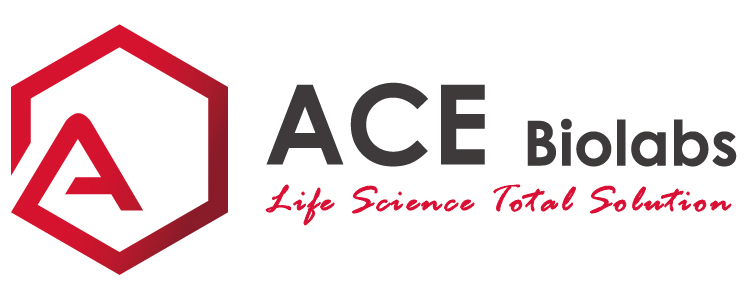
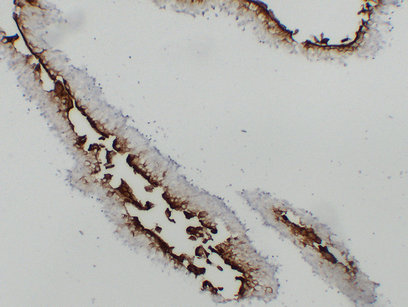
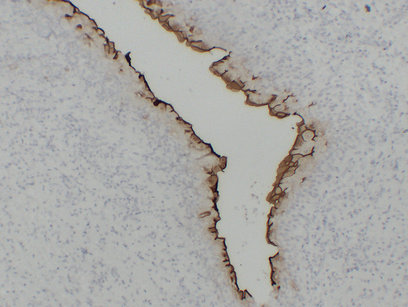
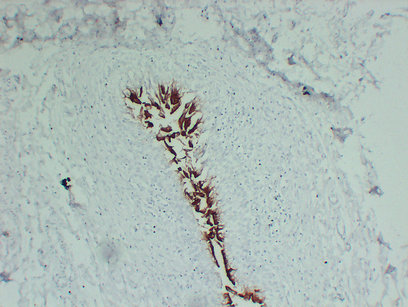
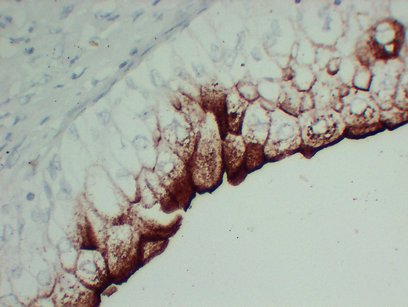
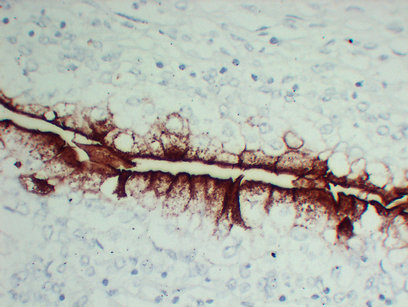








.png)